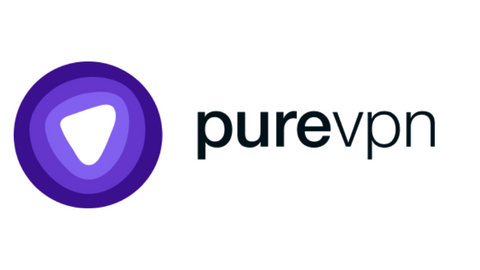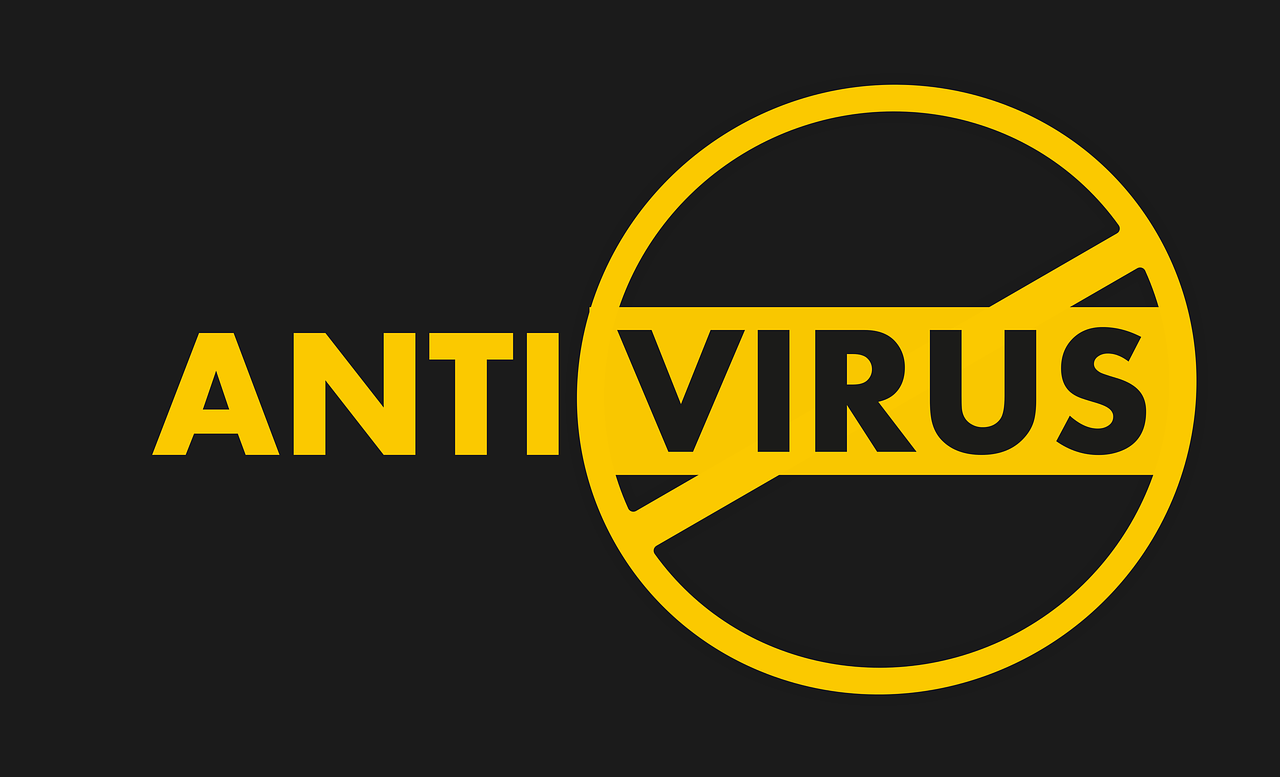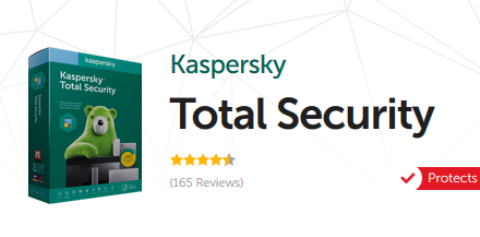This post will show you our compilation of the best safety tips for online shopping.
In today’s digital age, online shopping has revolutionized the way we acquire goods and services. The convenience of browsing an endless array of products from the comfort of our homes and having them delivered to our doorstep is unparalleled.
However, amidst this convenience lies the lurking threat of cyberattacks, scams, and fraud. To ensure a secure and enjoyable online shopping experience, it’s essential to adopt the best safety practices.
Here are some top safety tips for online shopping. Read on!
Table of Contents
Safety Tips For Online Shopping
1. Use a VPN on Public Wi-Fi
When shopping on public Wi-Fi networks, use a Virtual Private Network (VPN) to encrypt your internet connection and protect your data from potential eavesdroppers. In fact, you can check out our list of the best VPN.
A VPN creates a secure tunnel between your device and the VPN server. This tunnel encrypts your traffic, making it unreadable to anyone who tries to intercept it. This means that even if someone is able to hack into the public Wi-Fi network, they will not be able to see your data.
VPNs are especially important for online shopping, as you may enter sensitive information such as your credit card number and address. By using a VPN, you can help to protect your data from prying eyes.
Best VPN Deals
READ ALSO: How To Stay Safe Online During Black Friday LIKE A PRO!
2. Have a standard antivirus
As an online shopper, you need a standard security program on your device to detect and remove malware. Also, all security programs on your computer should be updated, as and when due.
Malware is malicious software that can damage your computer, steal your personal information, or even take control of your device. It can be spread through a variety of ways, including phishing emails, malicious websites, and infected downloads.
Antivirus and anti-malware software can help to protect your computer from malware. It works by scanning your computer for malware and removing any infections that are found. Check out the best antivirus software.
It is important to keep your security programs up to date to ensure that they are able to detect and remove the latest threats. Security programs often release updates to patch security vulnerabilities and to add new malware definitions.
In addition to using security programs, it is also important to conduct regular scans of your computer to identify and remove any malicious content.
Best Antivirus Deals
3. Use Strong, Unique Passwords
Create strong passwords that include a combination of upper and lower-case letters, numbers, and special characters.
Avoid using easily guessable information like birthdays or common words. Consider using a password manager to generate and store complex passwords securely.
Simple passwords with only numeric or alphabetical values are generally easy to hack. For better safety, a strong password with an alphanumeric combination and at least one special character is highly recommended.
You can also use a password generator or the best password manager to create and store your passwords.
4. Enable Two-Factor Authentication (2FA)
Whenever possible, enable 2FA on your online shopping accounts. This adds an extra layer of security by requiring you to provide a second verification step, typically a code sent to your phone, before gaining access.
Even if an attacker has your password, they will not be able to log in to your account without the second verification factor. This makes it much more difficult for attackers to steal your personal information or make unauthorized purchases using your account.
Most online retailers offer a variety of 2FA methods, such as SMS codes, authenticator apps, and security keys. Choose the method that is most convenient and secure for you.
5. Be Cautious with Personal Information
Only provide the necessary information required for your purchase. Legitimate online stores will not ask for excessive personal data.
Never share your Social Security number or full financial details over email or chat.
Fraudsters are oftentimes the greedy lot. Hence, do NOT reveal private information to anyone, for whatever reason. Any shopping platform that requests private and highly sensitive information like debit/credit card pin is obviously a sham.
READ ALSO: 14 Best Protection Tools Against Hackers [100% WORKING]
6. Use a Secure Payment Method
Credit cards often offer more robust fraud protection than debit cards. Consider using a dedicated credit card for online purchases. This way, if your credit card information is compromised, you are only liable based on your credit limit in unauthorized charges.
Debit cards, on the other hand, are linked to your bank account, and you could lose all of your money if your debit card is compromised.
Alternatively, you can use secure online payment methods like PayPal or digital wallets such as Apple Pay, Google Pay, or Samsung Pay.
These payment methods add an extra layer of security by not sharing your financial information with the seller. This means that even if the seller’s website is hacked, your financial information will remain safe.
7. Regularly Monitor Your Financial Statements
Keep a close eye on your bank and credit card statements for any unauthorized transactions. Report any suspicious activity to your financial institution immediately.
You can also set up alerts on your financial accounts to be notified of any transactions that exceed a certain amount or that are made in a foreign country. This can help you to quickly identify and report any unauthorized activity.
Here are some additional tips for monitoring your financial statements:
- Review your statements at least once a month.
- Look for any transactions that you do not recognize.
- Pay attention to the dates and times of transactions.
- Be aware of any unusual activity, such as multiple small charges from the same merchant or charges made in a foreign country.
If you notice any suspicious activity, report it to your financial institution immediately. They will be able to investigate the transaction and help you to protect your account.
8. Beware of Phishing Scams
Be cautious of emails, texts, or pop-up ads that ask for your personal or financial information. Legitimate companies will not request this information via unsolicited messages.
Phishing scams are attempts to trick you into revealing your personal information, such as your credit card number, social security number, or password. Phishing emails and text messages often look like they’re from a legitimate company, such as your bank or a popular retailer.
However, they may contain typos or grammatical errors, or they may ask you to click on a link or open an attachment.
If you’re not sure whether an email or text message is legitimate, do not click on any links or open any attachments. Instead, go to the company’s website directly to log in to your account.
9. Keep Your Devices Secure
Ensure your computer, smartphone, and other devices used for online shopping are equipped with updated antivirus and anti-malware software.
Antivirus and anti-malware software can help to protect your devices from a variety of threats, including viruses, spyware, ransomware, and other malware. It is important to keep your antivirus and anti-malware software up to date to ensure that it is able to detect and remove the latest threats.
In addition to using antivirus and anti-malware software, it is also important to keep your operating system and browser up to date. Operating systems and browsers often release security patches that can help to protect your devices from known vulnerabilities.
READ ALSO: Best VPN For 2023
10. Check Seller Reviews
Before making a purchase from a new or lesser-known seller, search for customer reviews and ratings. These can provide valuable insights into the quality and reliability of the product and seller.
When reading seller reviews, pay attention to the following:
- Overall rating. The overall rating can give you a general idea of how satisfied customers are with the seller.
- Number of reviews. The more reviews a seller has, the more reliable the overall rating is.
- Recency of reviews. Look for recent reviews to get the most up-to-date information about the seller.
- Content of reviews. Read through the reviews to get a better understanding of what customers liked and disliked about the seller and their products.
If you see a lot of negative reviews, it may be best to avoid that seller. However, keep in mind that everyone has different experiences, so it’s important to take the reviews with a grain of salt.
If you see a mix of positive and negative reviews, it’s probably a good idea to do some additional research to get a better sense of the seller’s reputation.
11. Shop from Reputable Websites
Stick to well-known and reputable online retailers. These companies have established a track record of trustworthiness and security.
Be cautious when dealing with lesser-known or new online stores. Research their reputation, read reviews, and check for contact information and physical addresses to verify their legitimacy.
12. Look for HTTPS and a Padlock Icon
Ensure the website you’re shopping on has “https://” in the URL and a padlock icon in the address bar. This indicates that the website uses encryption to protect your data during transactions.
A shopping site, that handles financial dealings, should be aptly secured. Secure sites typically carry the “Https” tag (with SSL certificate protection), while their insecure counterparts adopt the “Http” tag. If you come across the latter, you may have to look elsewhere for your goods (or services).
READ ALSO: 15 Best BullGuard Antivirus Alternatives (Free & Paid)
13. Use a Dedicated Email Address
Consider creating a separate email address solely for online shopping. This can help you isolate shopping-related communications and reduce the risk of phishing attempts in your primary email account.
Phishing emails are attempts to trick you into revealing your personal information, such as your credit card number or password. Phishing emails often look like they’re from a legitimate company, such as your bank or a popular retailer.
However, they may contain typos or grammatical errors, or they may ask you to click on a link or open an attachment. If you’re not sure whether an email is legitimate, do not click on any links or open any attachments.
By using a dedicated email address for online shopping, you can make it easier to identify phishing emails. If you receive an email in your shopping email account from a company that you have not shopped with recently, it is likely to be a phishing email.
14. Check for Contact Information
Ensure the website provides clear and accurate contact information, including a physical address and customer support email or phone number. Legitimate businesses should be easily reachable.
If a website does not provide contact information, or if the contact information is incomplete or inaccurate, it is a red flag. Legitimate businesses should be easy to reach if you have any questions or problems with your purchase.
You can also try to find contact information for the business on other websites, such as Google Maps or the Better Business Bureau.
If you cannot find any contact information for the business, it is best to avoid shopping on that website.
15. Avoid Public Computers and Networks
Whenever possible, avoid making online purchases from public computers or internet cafes. These devices may have malware or keyloggers that can compromise your security.
Malware is malicious software that can damage your computer, steal your personal information, or even take control of your device.
Keyloggers are a type of malware that logs everything you type on your keyboard. This information can then be used to steal your personal information, such as your credit card number or password.
If you must use a public computer to shop online, be sure to take the following precautions:
- Do not enter any personal or financial information on the computer.
- Use a virtual private network (VPN) to encrypt your internet traffic.
- Clear the browser’s cache and cookies after you finish shopping.
It is also important to be aware of your surroundings when using a public computer. If you feel like someone is watching you, or if you are not sure if the computer is secure, it is best to avoid using it to shop online.
READ ALSO: Best Antivirus For 2023
16. Keep Software Updated
Regularly update your device’s operating system, web browser, and any shopping apps to patch security vulnerabilities and keep them current.
Software updates often include security patches that can help to protect your device from malware and other threats. It is important to keep your software up to date to ensure that you are protected from the latest threats.
You can usually enable automatic updates for your software so that you don’t have to worry about updating it manually.
In addition to keeping your software up to date, it is also important to use strong passwords and enable two-factor authentication for all of your online accounts. This will help to protect your accounts from being compromised, even if your software is outdated.
17. Be Cautious of Deals That Seem Too Good to Be True
If a deal appears too good to be true, it probably is. Scammers often use enticing offers to lure unsuspecting shoppers. Research the seller and product thoroughly before making a purchase.
Here are some red flags to look out for:
- Prices that are significantly lower than the average price for the product.
- Sellers who are not reputable or who do not have a good track record.
- Products that are not available from other retailers.
- Sellers who ask for payment upfront via wire transfer or gift card.
If you see any of these red flags, it is best to avoid shopping with that seller.
To research a seller, you can read online reviews, check their website for contact information, and search for complaints against them. You can also research the product to make sure that it is legitimate and that the price is reasonable.
18. Use Reputable Price Comparison Websites
Price comparison websites can help you find the best deals, but stick to well-known and trusted platforms to avoid fraudulent listings.
Price comparison websites allow you to compare prices for products from different retailers. This can be a great way to find the best deal on a product. However, it is important to be careful when using price comparison websites, as there are some fraudulent listings.
To avoid fraudulent listings, only use reputable price comparison websites. Some reputable price comparison websites include Google Shopping, Amazon, and PriceGrabber.
When you are on a price comparison website, be sure to read the reviews of the sellers before making a purchase. You should also check the website’s return policy and customer service information.
19. Keep Records of Your Transactions
Maintain a record of your online shopping transactions, including order confirmations, receipts, and tracking numbers. This documentation can be invaluable in case of disputes.
Here are some tips for keeping records of your online shopping transactions:
- Save all order confirmations and receipts in a dedicated folder on your computer or in the cloud.
- Take screenshots of tracking numbers and other important information.
- Print out important documents and store them in a safe place.
- Back up your records regularly.
If you have a dispute with an online retailer, your records will help you to prove your case. For example, if you receive an incomplete order or a defective product, you can provide your order confirmation and receipt to the retailer to support your claim.
20. Educate Yourself About Online Scams
Stay informed about the latest online scams and tactics used by cybercriminals. Knowledge is your best defense against falling victim to these schemes.
Here are some tips for educating yourself about online scams:
- Visit the websites of government agencies and consumer protection organizations for information about online scams.
- Read articles and blog posts about online scams.
- Follow security experts on social media for tips and advice.
- Sign up for email alerts from your bank or credit card company to be notified of new scams.
By educating yourself about online scams, you can be more vigilant and protect yourself from falling victim to these schemes.
21. Enable Purchase Notifications
Set up purchase notifications or alerts with your bank or credit card company. This way, you’ll be promptly notified of any suspicious or unusual activity on your accounts.
Purchase notifications can help you to detect fraudulent activity early on. For example, if you receive a notification for a purchase that you did not make, you can contact your bank or credit card company immediately to report the fraud.
Most banks and credit card companies offer purchase notifications via email, text message, or push notification. You can usually enable purchase notifications in your account settings.
22. Use Verified Marketplaces
When shopping on online marketplaces, such as Amazon or eBay, prioritize sellers with a high rating and good reviews. These platforms often provide buyer protection policies.
Verified marketplaces offer a number of advantages over shopping directly from online retailers. For example, verified marketplaces typically have a larger selection of products and lower prices. Additionally, verified marketplaces often offer buyer protection policies, which can help you to get a refund or replacement if you have a problem with your purchase.
When shopping on a verified marketplace, be sure to prioritize sellers with a high rating and good reviews. This will help you to avoid buying from fraudulent sellers.
23. Secure Your Home Wi-Fi
Ensure your home Wi-Fi network is secure with a strong, unique password. This prevents unauthorized access to your network and the potential interception of your data.
Your home Wi-Fi network is a potential entry point for cybercriminals. If your Wi-Fi network is not secure, cybercriminals can access your devices and steal your personal information.
To secure your home Wi-Fi network, use a strong, unique password. Your password should be at least 12 characters long and include a mix of upper and lowercase letters, numbers, and symbols. You should also change your Wi-Fi password regularly.
In addition to using a strong password, you should also enable encryption on your Wi-Fi network. Encryption will scramble your data so that cybercriminals cannot intercept it.
24. Be Wary of Unsolicited Pop-Ups
Avoid clicking on unsolicited pop-up ads, especially those offering deals or discounts. Close pop-ups and continue shopping on the main website.
Unsolicited pop-up ads can be dangerous, as they may contain malware or lead you to phishing websites.
Phishing websites are designed to look like legitimate websites, such as your bank or a popular retailer. However, they are actually fake websites that are trying to steal your personal information, such as your credit card number or password.
If you see an unsolicited pop-up ad, do not click on it. Instead, close the pop-up and continue shopping on the main website.
25. Research Gift Card Sellers
If you’re buying or receiving gift cards, make sure you’re getting them from reputable sources. Scammers may sell counterfeit or empty gift cards.
When buying gift cards, only purchase them from the official website of the retailer or from a reputable gift card reseller. Avoid buying gift cards from third-party sellers, such as online marketplaces or auction sites.
When receiving gift cards, be sure to verify that they are legitimate. You can do this by checking the gift card balance on the retailer’s website or by calling the retailer’s customer service department.
26. Verify Seller Ratings and Feedback
On e-commerce platforms, examine seller ratings and feedback from previous customers. This information can provide insights into a seller’s reliability and customer service.
Seller ratings and feedback can be a helpful tool for assessing the quality of a seller and their products. When reading seller feedback, pay attention to the following:
- The overall rating of the seller
- The number of reviews the seller has
- The content of the reviews
If a seller has a low rating or a lot of negative reviews, it is best to avoid doing business with them.
27. Check Delivery Times and Shipping Costs
Before finalizing a purchase, review the estimated delivery times and shipping costs. Some sellers may charge exorbitant shipping fees or offer unrealistic delivery times.
It is important to factor in delivery times and shipping costs when making a purchase online. Some sellers may charge very high shipping fees, or they may offer unrealistic delivery times.
Before you finalize your purchase, be sure to review the estimated delivery times and shipping costs to avoid any surprises.
28. Shop from popular shopping sites
Myriads of fake shopping sites abound on the internet, with thousands of people getting scammed by the day. So, to be safe, restrict your shopping to only prominent shopping hubs.
If you feel the need to shop from a relatively unknown site, try and do a little research to garner reviews on such sites.
Here is a table of popular shopping sites:
| Website | Country | Categories |
|---|---|---|
| Amazon | United States | All categories |
| eBay | United States | All categories |
| Walmart | United States | All categories |
| Target | United States | All categories |
| Best Buy | United States | Electronics, appliances, and home entertainment |
| Home Depot | United States | Home improvement and construction |
| Lowe’s | United States | Home improvement and construction |
| Macy’s | United States | Clothing, shoes, and accessories |
| Nordstrom | United States | Clothing, shoes, and accessories |
| Sephora | United States | Beauty and skincare |
| ASOS | United Kingdom | Clothing, shoes, and accessories |
| Boohoo | United Kingdom | Clothing, shoes, and accessories |
| PrettyLittleThing | United Kingdom | Clothing, shoes, and accessories |
| AliExpress | China | All categories |
| Wish | China | All categories |
| Lazada | Southeast Asia | All categories |
| Tokopedia | Indonesia | All categories |
| Shopee | Southeast Asia | All categories |
When you shop on a fake shopping website, you may never receive your order, or you may receive a counterfeit product.
To avoid shopping on a fake shopping website, only shop on popular shopping websites. Popular shopping websites have a good reputation, and they are less likely to be scams.
If you are unsure whether a shopping website is legitimate, you can do a quick search online to see if there are any reviews of the website. You can check the website’s reviews, look for contact information, and make sure the website has a secure connection (https://).
If you find any negative reviews, it is best to avoid shopping on that website.
29. Read Return and Refund Policies
Familiarize yourself with the seller’s return and refund policies before making a purchase. This can save you headaches in case the product doesn’t meet your expectations.
It is important to read the seller’s return and refund policies before making a purchase, especially if you are buying an expensive item. This will ensure that you know what your options are if you are not satisfied with the product.
Some sellers have very restrictive return and refund policies. For example, some sellers may not allow returns at all, or they may only allow returns within a certain period of time. Other sellers may charge a restocking fee for returns.
Before you make a purchase, be sure to read the seller’s return and refund policies carefully so that you understand your options.
READ ALSO: 10 Best Antivirus For A Basic Laptop [Must Read]
30. Install shopping apps from only trusted sites

Do NOT install shopping apps from “untrusted” sources; install from only trusted sources. Trusted installation sources basically include Google Play, App Store, Amazon Store, and Microsoft Store, among others.
Alternatively, you can easily go to the shopping platform’s official website for a safe installation guide and link(s).
Shopping apps can be a convenient way to shop online, but it is important to be careful about where you download them from. Shopping apps from untrusted sources may be infected with malware or may be scams.
When installing shopping apps, only download them from trusted sources, such as the Google Play Store, App Store, Amazon Store, or Microsoft Store. You can also download shopping apps from the official website of the shopping platform.
Before installing any shopping app, be sure to read the reviews and check the permissions that the app is asking for. If you are unsure whether a shopping app is legitimate, it is best to avoid installing it.
READ ALSO: The Ultimate Surfshark Incogni Review For Internet Users
31. Always sign out of your account(s)
After every shopping session, make sure you’re properly signed out of your account, before closing the window. Do NOT close the window before signing out of a shopping site.
When you are logged into a shopping website, your personal information, such as your name, address, and credit card information, is stored on the website’s servers.
If you do not sign out of your account, anyone who has access to your computer or device could access your personal information and make purchases on your behalf.
To sign out of a shopping website, simply click on the “Sign Out” or “Log Out” button. Once you have signed out, your personal information will be removed from the website’s servers.
Best Safety Tips For Online Shopping – Frequently Asked Questions
What are some of the most common online shopping scams?
Some of the most common online shopping scams include:
- Phishing scams: Phishing scams are attempts to trick you into revealing your personal information, such as your credit card number or password. Phishing emails often look like they’re from a legitimate company, such as your bank or a popular retailer. However, they may contain typos or grammatical errors, or they may ask you to click on a link or open an attachment.
- Fake websites: Fake websites are designed to look like legitimate websites, but they are actually scams. When you shop on a fake website, you may never receive your order, or you may receive a counterfeit product.
- Counterfeit products: Counterfeit products are fake products that are made to look like legitimate products. Counterfeit products are often of poor quality and may be dangerous to use.
- Malware: Malware is malicious software that can damage your computer or steal your personal information. Malware can be spread through a variety of ways, including malicious websites, infected downloads, and phishing emails.
How can I protect myself from online shopping scams?
There are a number of things you can do to protect yourself from online shopping scams:
- Shop on trusted websites: Only shop on websites that you know and trust. If you are not sure whether a website is legitimate, you can do a quick search online to see if there are any reviews of the website.
- Be careful about clicking on links: Be careful about clicking on links in emails or text messages from unknown senders. These links may lead to fake websites or to malicious apps.
- Use a strong password and enable two-factor authentication: Use a strong password for your shopping account and enable two-factor authentication. This will help to protect your account from being hacked.
- Be wary of deals that seem too good to be true: If a deal seems too good to be true, it probably is. Scammers often use enticing offers to lure unsuspecting shoppers.
- Keep your software up to date: Keep your operating system, web browser, and security software up to date. This will help to protect your computer from malware.
What should I do if I think I’ve been scammed?
If you think you’ve been scammed, the most important thing to do is to report it to the authorities. You can also report the scam to the company that you think you were scammed by.
Here are some additional tips for dealing with online shopping scams:
- Change your passwords: If you think your password has been compromised, change it immediately.
- Monitor your credit reports: Monitor your credit reports for any unauthorized activity.
- Place a fraud alert on your credit reports: You can place a fraud alert on your credit reports to notify potential creditors that you may be a victim of fraud.
- File a police report: If you have suffered financial losses due to an online shopping scam, you should file a police report.
By following these tips, you can help protect yourself from online shopping scams and keep your personal information safe.
Conclusion
Online shopping offers immense convenience, but it’s essential to remain vigilant and prioritize security.
By following these best safety tips for online shopping, you can safeguard your personal and financial information while enjoying the benefits of e-commerce.
Remember that your online safety is a shared responsibility, and staying informed is your best defense against cyber threats. Happy and secure online shopping!
Was this helpful?
INTERESTING POSTS
- Honest And Unbiased CyberGhost VPN Review
- Over 26 Million Stolen Credit Cards rescued from Hackers by Vigilantes
About the Author:
Chandra Palan is an Indian-born content writer, currently based in Australia with her husband and two kids. She is a passionate writer and has been writing for the past decade, covering topics ranging from technology, cybersecurity, data privacy and more. She currently works as a content writer for SecureBlitz.com, covering the latest cyber threats and trends. With her in-depth knowledge of the industry, she strives to deliver accurate and helpful advice to her readers.






















































